-
Product Name
PPAR gamma antibody
- Documents
-
Description
PPAR gamma Rabbit Polyclonal antibody. Positive IHC detected in human prostate cancer tissue, human heart tissue. Positive IF detected in HepG2 cells. Positive IP detected in HL-60 cells. Positive WB detected in U-937 cells, HL-60 cells, human heart tissue, K-562 cells, MCF7 cells, mouse heart tissue. Observed molecular weight by Western-blot: 50-60 kDa
-
Tested applications
ELISA, WB, IF, IHC, IP
-
Species reactivity
Human,Mouse,Rat; other species not tested.
-
Alternative names
CIMT1 antibody; NR1C3 antibody; PPAR gamma antibody; PPARG antibody; PPARG1 antibody; PPARG2 antibody; PPARgamma antibody
-
Isotype
Rabbit IgG
-
Preparation
This antibody was obtained by immunization of PPAR gamma recombinant protein (Accession Number: XM_011533841). Purification method: Antigen affinity purified.
-
Clonality
Polyclonal
-
Formulation
PBS with 0.02% sodium azide and 50% glycerol pH 7.3.
-
Storage instructions
Store at -20℃. DO NOT ALIQUOT
-
Applications
Recommended Dilution:
WB: 1:500-1:5000
IP: 1:200-1:2000
IHC: 1:20-1:200
IF: 1:10-1:100
-
Validations
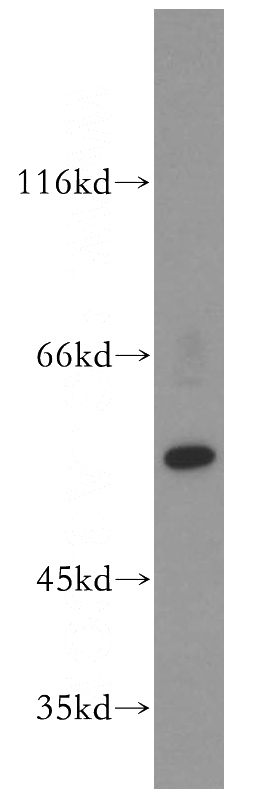
U-937 cells were subjected to SDS PAGE followed by western blot with Catalog No:114081(PPARG antibody) at dilution of 1:800
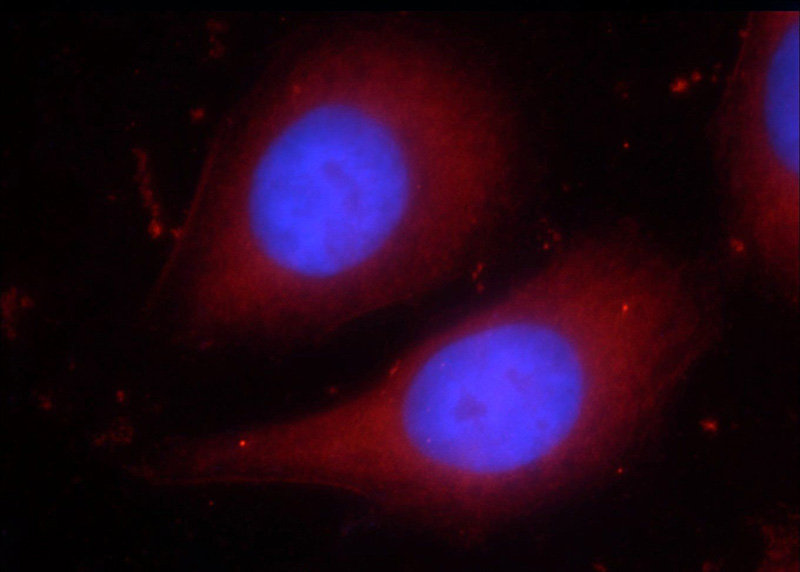
Immunofluorescent analysis of HepG2 cells using Catalog No:114081(PPARG Antibody) at dilution of 1:25 and Rhodamine-Goat anti-Rabbit IgG
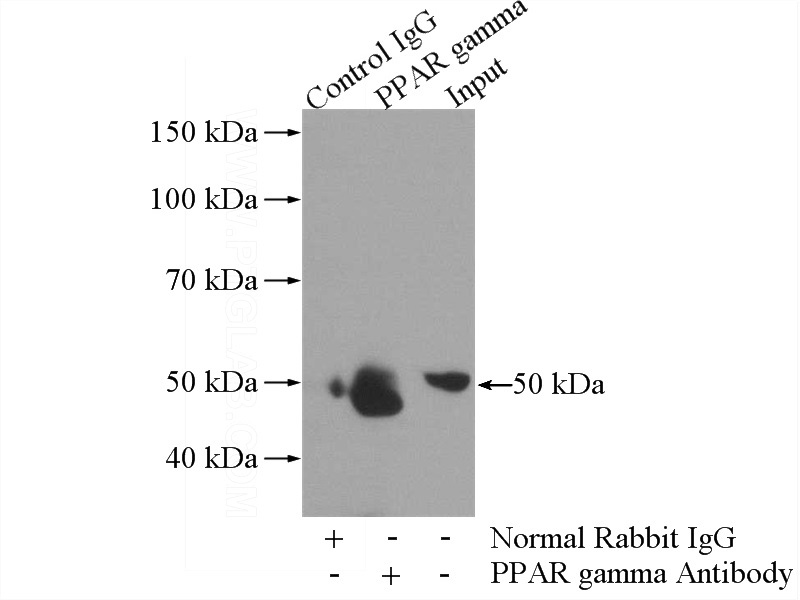
IP Result of anti-PPARG (IP:Catalog No:114081, 3ug; Detection:Catalog No:114081 1:700) with HL-60 cells lysate 4000ug.
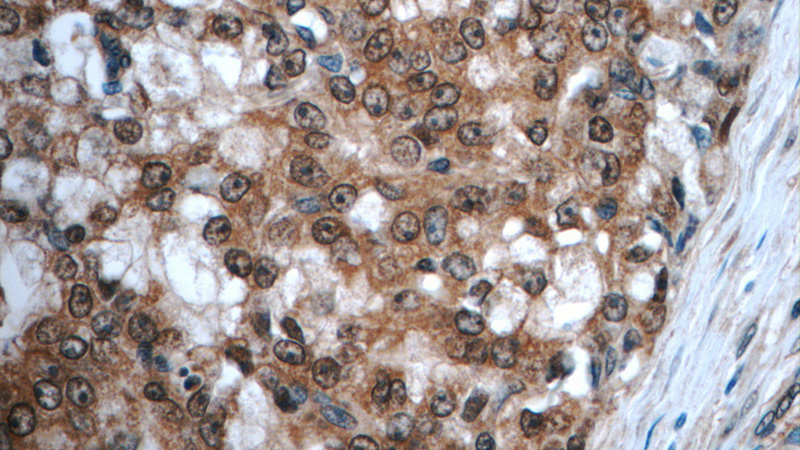
Immunohistochemistry of paraffin-embedded human prostate cancer tissue slide using Catalog No:114081(PPARG Antibody) at dilution of 1:50 (under 40x lens)
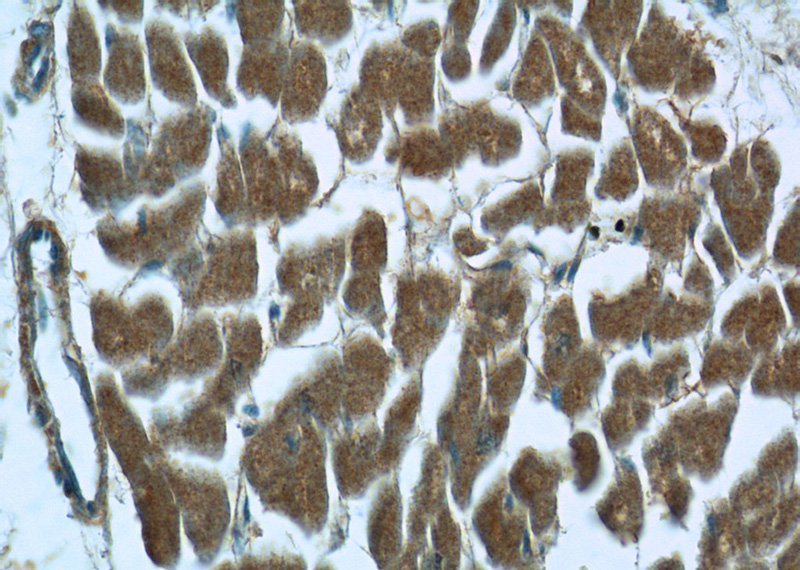
Immunohistochemistry of paraffin-embedded human heart tissue slide using Catalog No:114081(PPARG Antibody) at dilution of 1:50 (under 40x lens)
-
Background
Peroxisome Proliferator-Activated Receptors (PPARs) are ligand-activated intracellular transcription factors, members of the nuclear hormone receptor superfamily (NR), that include estrogen, thyroid hormone receptors, retinoic acid, Vitamin D3 as well as retinoid X receptors (RXRs). The PPAR subfamily consists of three subtypes encoded by distinct genes denoted PPARα (NR1C1), PPARβ/δ (NR1C2) and PPARγ (NR1C3), which are activated by selective ligands. PPARγ, also named as PPARG, contains one nuclear receptor DNA-binding domain and is a receptor that binds peroxisome proliferators such as hypolipidemic drugs and fatty acids. It plays an important role in the regulation of lipid homeostasis, adipogenesis, insulin resistance, and development of various organs. Defects in PPARG are the cause of familial partial lipodystrophy type 3 (FPLD3) and may be associated with susceptibility to obesity (OBESITY). Defects in PPARG can lead to type 2 insulin-resistant diabetes and hyptertension. PPARG mutations may be associated with colon cancer. Genetic variations in PPARG can be associated with susceptibility to glioma type 1 (GLM1). This antibody is a rabbit polyclonal antibody raised against residues near the C terminus of human PPARG.
-
References
- Chang MJ, Xiao JH, Wang Y, Yan YL, Yang J, Wang JL. 2, 3, 5, 4'-Tetrahydroxystilbene-2-O-beta-D-glucoside improves gastrointestinal motility disorders in STZ-induced diabetic mice. PloS one. 7(12):e50291. 2012.
- Hong Y, Zhou Y, Wang Y, Xiao S, Liao DJ, Zhao Q. PPARγ mediates the effects of WIN55,212-2, an synthetic cannabinoid, on the proliferation and apoptosis of the BEL-7402 hepatocarcinoma cells. Molecular biology reports. 40(11):6287-93. 2013.
- Wang G, Ji Y, Li Z. Nitro-oleic acid downregulates lipoprotein-associated phospholipase A2 expression via the p42/p44 MAPK and NFκB pathways. Scientific reports. 4:4905. 2014.
- Pan X, Wang P, Luo J. Adipogenic changes of hepatocytes in a high-fat diet-induced fatty liver mice model and non-alcoholic fatty liver disease patients. Endocrine. 48(3):834-47. 2015.
- Jin Y, Liu K, Peng J. Rhizoma Dioscoreae Nipponicae polysaccharides protect HUVECs from H2O2-induced injury by regulating PPARγ factor and the NADPH oxidase/ROS-NF-κB signal pathway. Toxicology letters. 232(1):149-158. 2014.
- Wang J, Guan X, Guo F. miR-30e reciprocally regulates the differentiation of adipocytes and osteoblasts by directly targeting low-density lipoprotein receptor-related protein 6. Cell death & disease. 4:e845. 2013.
- Ma X, Li SF, Qin ZS. Propofol up-regulates expression of ABCA1, ABCG1, and SR-B1 through the PPARγ/LXRα signaling pathway in THP-1 macrophage-derived foam cells. Cardiovascular pathology : the official journal of the Society for Cardiovascular Pathology. 24(4):230-5. 2015.
- Guan X, Gao Y, Zhou J. miR-223 Regulates Adipogenic and Osteogenic Differentiation of Mesenchymal Stem Cells Through a C/EBPs/miR-223/FGFR2 Regulatory Feedback Loop. Stem cells (Dayton, Ohio). 33(5):1589-600. 2015.
Related Products / Services
Please note: All products are "FOR RESEARCH USE ONLY AND ARE NOT INTENDED FOR DIAGNOSTIC OR THERAPEUTIC USE"
